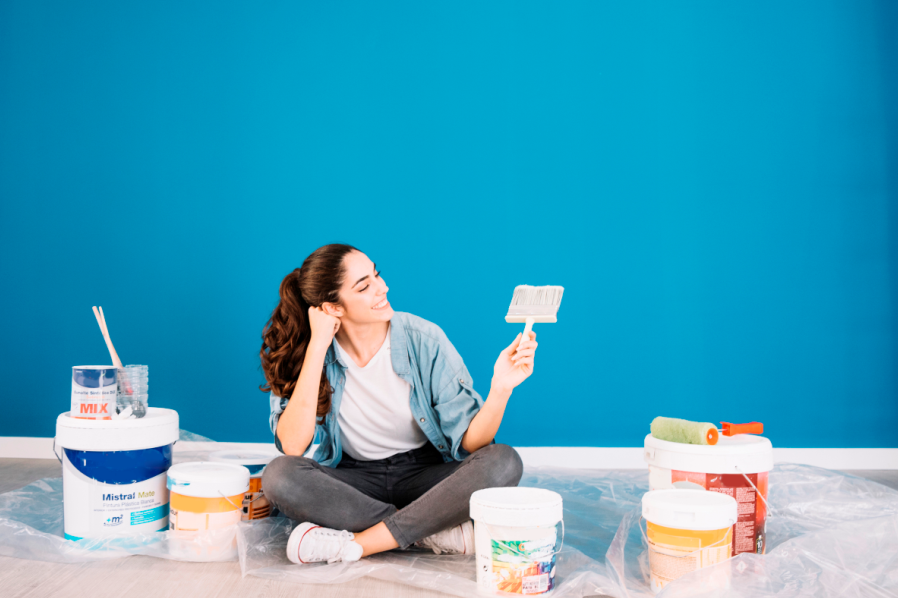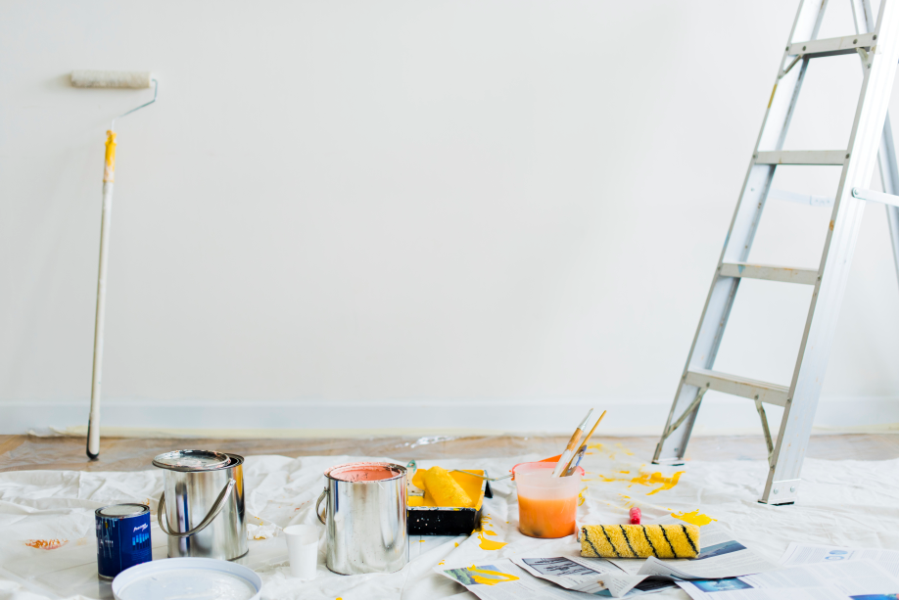
The time has come to give your home a fresh coat of paint. While most people worry only about what colour they should use in which room, those more aware of the impact of the type of paint you choose also try to go for the most eco-friendly products. If you’d like your home to be not only pretty but “green” as well, take a look at the following tips for painting your house.
Only lead-free paints
We all know about the negative health effects of lead, but that doesn’t mean we’ve completely eliminated it from our homes. Some old houses still feature high-level lead paints, which is often just masked by a coat (or two) of lead-free paint applied later. While that itself is not a major health risk, if you chip the paint while renovating your house, you are in trouble. Lead gets dispersed all over the home and garden, creating lead dust that can be inhaled.
Also, some old furniture, such as baby cots and chairs can contain lead paint. If you have children who are just the right height to get in close contact with cupboards and chair and table legs which contain lead paint, they might wish to get their gums or teeth on these, which can be very detrimental to their health.
VOC paints
Look for zero-VOC paints when choosing the new paint for your home, because that the only way to know you’ve done everything you could to keep your home eco-friendly. Such paints may cost more than some poor-quality paints that are not eco-friendly, but you really need to think about the health of everyone living in the house. Also, such cheap paints usually don’t last long enough to justify the money you save if you buy them. Once you’re done painting, make sure you dispose of any leftover paint in accordance with the manufacturer’s instructions.

Hire a professional?
Eco-friendly paints are also user-friendly, especially since there are no toxic fumes to worry about. However, it’s always much better to recommend a professional, particularly for large paint jobs. Experienced experts have all the tools and know-how to work faster, do a better job and, what’s also very important, use less paint than an average DIY-enthusiast.
For example, recent interior painting projects in Sydney show that clients are now looking for various specific decorative features to be installed and require much more from painters than to simply apply a new coat of paint on walls.
Remove old paint
It’s more time consuming than simply applying a new coat of paint over the old one, but you should definitely consider removing old paint by sanding or scraping it off. You may need to use a paint stripper as well, but make sure you opt for one that doesn’t release toxic particles of paint into the air since they could stay in the carpet and soft furnishings for years to come.
Stick to a system
Don’t try to cut corners when painting your home. You need your primers, undercoats and topcoats; and don’t add water to thin out your paint and help it “go further”. You’ll only end up with something that won’t last as long and you’ll have to repeat the whole process much sooner than expected. Strictly follow the instructions when it comes to using the particular paint and keep your equipment clean after using it (if you’re painting on your own). If, on the other hand, you’ve hired a professional, make sure that they protect the furniture and floors and that they clean up once they finish their job.
Going green when painting your home is not only eco-friendly but also much healthier for you and your family. So, next time you need to have a paint job done, opt for eco-friendly products and get rid of any traces of lead paint that might still exist in your home. Your place will look great and you’ll know that you’ve done your part when it comes to environmental protection.
Written by Lillian Connors
About the Author
Lillian Connors can’t resist the urge to embark on a myriad of green living/home improvement projects and spread the word about them. She cherishes the notion that sustainable housing and gardening will not only make us far less dependent on others regarding the dwellings we inhabit, but also contribute to our planet being a better place to live on. You can check her out on Twitter and LinkedIn.
You may also like
13 Science-Backed Ways to Prevent Air Pollution in Your Home
Best Sites to Shop for Eco-Friendly Products
The Anatomy of a Green Home [Infographic]
